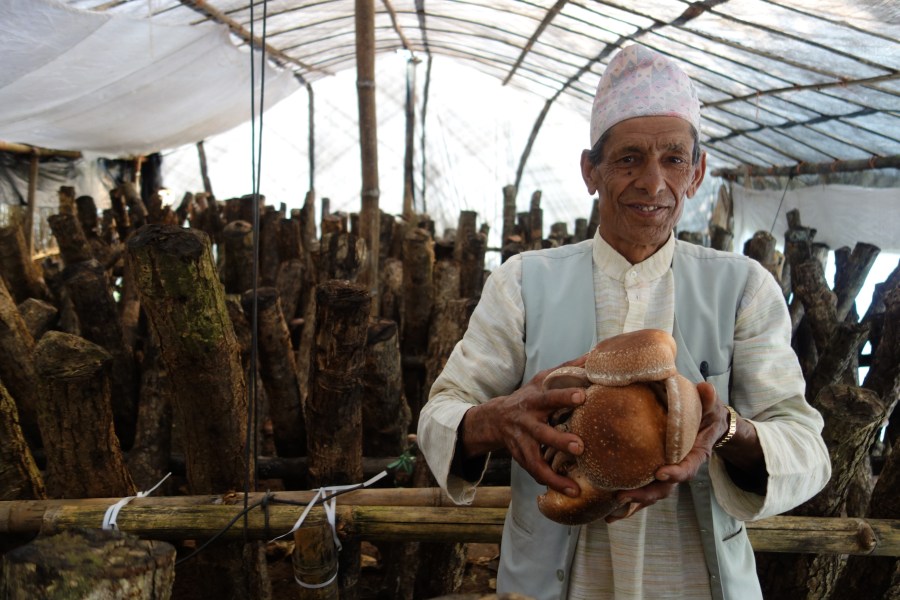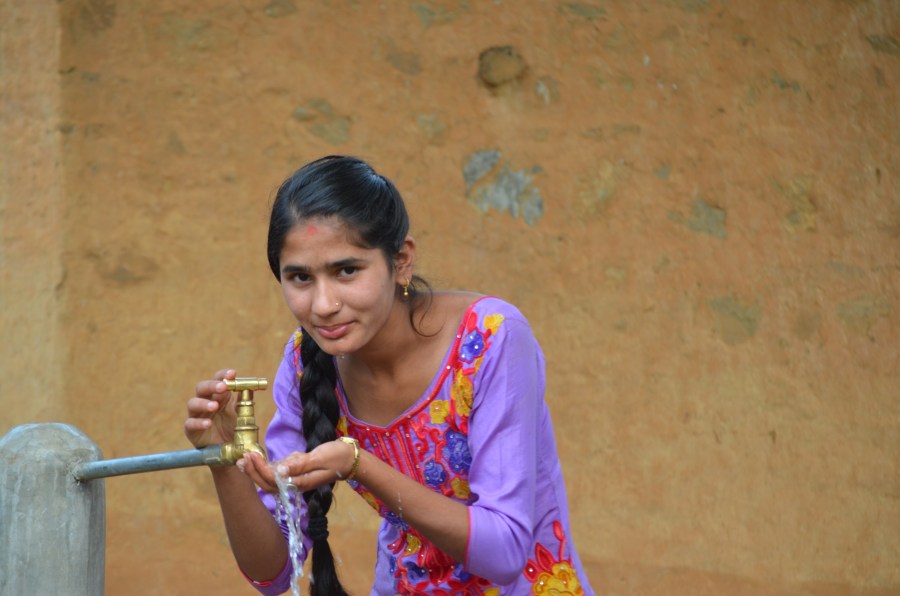Sushmita’s story
“I always used to think about what my life would be like if I didn’t have to spend time carrying water. I would be able to spend more time doing school work and studying.“

Sushmita Regmi, 18, is a young woman from the village of Sirubari, in Syangja district, Nepal. Like many other Nepalese women her age, she dreamt of a time whereby she was able to devote more of her energy to education. Unfortunately, when you live with a family of five, and you are the first born daughter, education is often not the priority.
“I am the eldest daughter,” she told us, “so I am responsible for fetching water and helping my mother with the housework.”
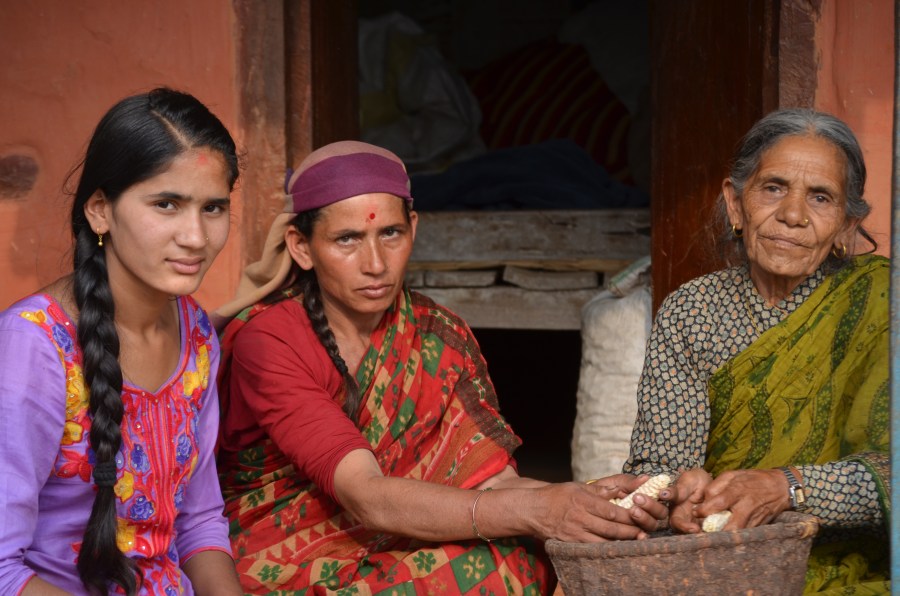
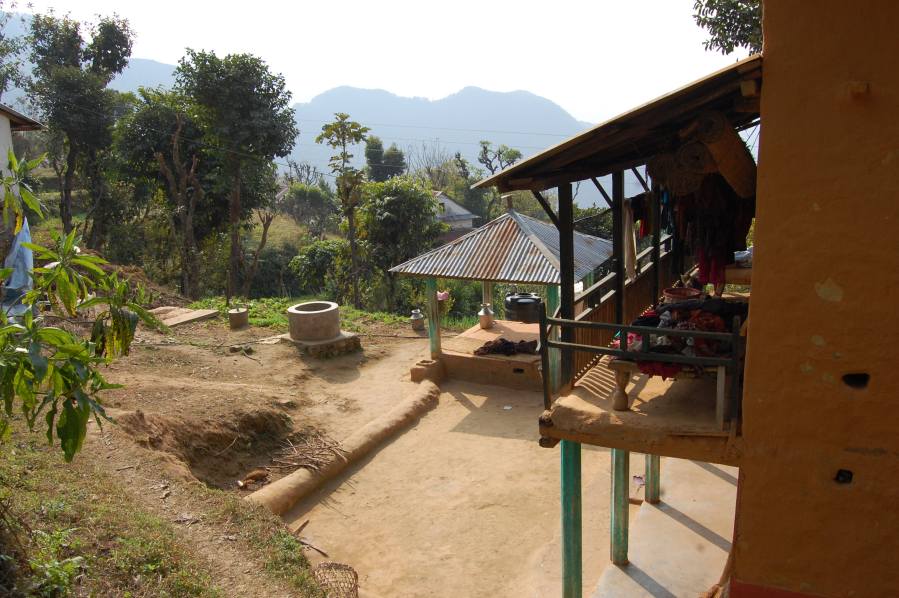
Access to water and its impact on farming
Sushmita is from a farming family. They own roughly two and a half square kilometres of bari – highland with no access to canal irrigation – and the same amount of khet – lowland with access to canal irrigation. The crops grown are not only for the family to eat, but also to sell at market. When a good crop is grown, a good income is received, and this money can be set aside for investment, or to spend on education or healthcare.
But without access to canal irrigation, the bari was left barren for six-months of the year, and crop growth has become even more difficult recently due to the worsening effects of climate change.
“In the last few years, I have noticed some changes in weather in the area,” Sushmita said. “Summer is hot and we don’t get much rain. Most of the households [in the village] lost their orange trees because of this.”
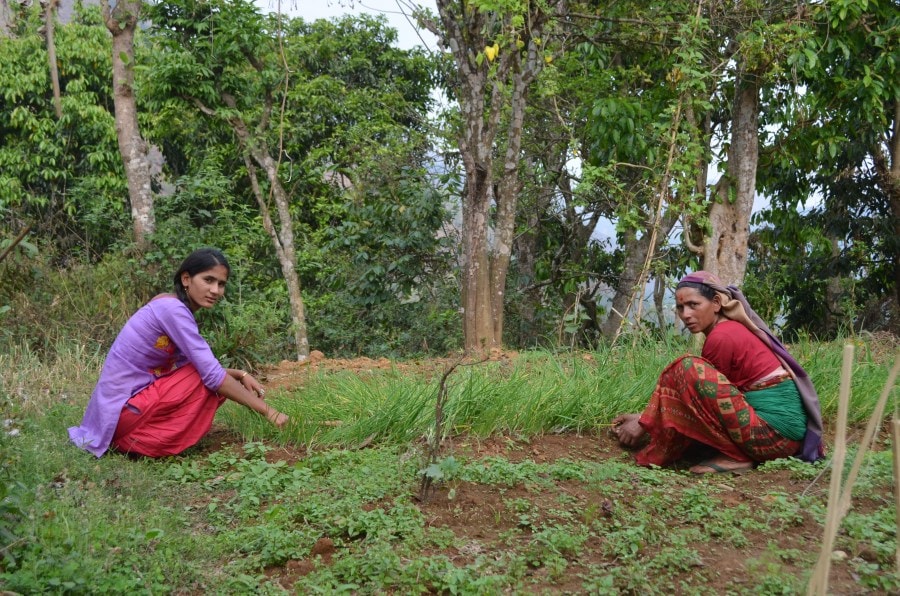
The burden of water collection
Sushmita’s life has been typical of that experienced by many of the women and girls in developing countries. From a young age she has had to sacrifice any ambitions of her own in order to help with housework and water collection.
“I have supported my family to fetch water since I was very young”, she said. “I had very little hope for me and my friends. Every generation of women and girls had to do [this type of] work.”
Sushmita’s day would begin at 6am. “I used to spend all my mornings just carrying water,” she told us. “I would stop carrying water at 8am so that I could get ready for school. Then, I would have my breakfast and leave for school at 9am.”
The water source was 30 minutes from Sushmita’s house, and on each journey she had to carry 15 litres of water – a weight of 15 kilograms.
The mountainous terrain of the Himalayas makes the journey difficult, and without lighting to guide the way it can be treacherous. There have been many incidents of women and girls falling or being attacked whilst on their way to fetch water. Sushmita admits: “it is risky walking to get water during the monsoon or after dark. I have fallen a couple of times doing this.”
As well as being dangerous to her own safety, water collection also damaged Sushmita’s ability to attend school and receive an education. “I remember that sometimes I used to be late for school at least twice a week,” she told us. “It takes me an hour to walk to school. There is no transportation. There were many times when my friends would leave me behind and go to school without me. I had to walk to school on my own. It wasn’t very nice.”
Sushmita’s family needs up to 60 litres of water a day for domestic uses, which means that after Sushmita has returned home from school at 6pm, she must go to fetch water once again.
After collecting this water, she would then have to help in the kitchen, and only after dinner had been eaten and tidied away, would she be able to concentrate on her school work.
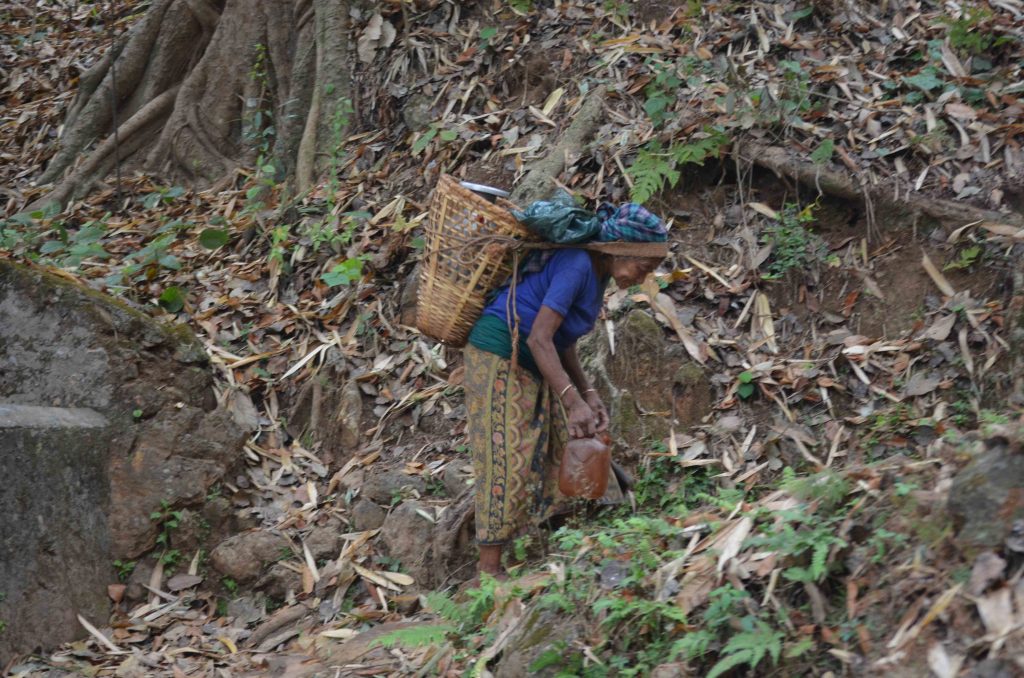
Harnessing the power of the sun to pump water
In 2013, Renewable World, with the help of our local partners, installed a solar-powered water pumping system in Sushmita’s village. This technology harnesses solar energy and uses it to pump water from its source to tap stands throughout the village.
“All the households were very happy when they heard about the project and the opportunities to have access to water near their houses”, Sushmita told us. “Women and girls were especially happy and were ready to give support.”
As the project got under way, and the community members were mobilised, the commitment from those involved was clear to see. “All of the community were involved in helping to install the technology”, said Sushmita. “I was involved in laying the pipeline, making the area ready for solar panel installation, and carrying the sand and stone to build the reservoir tank.”
Despite continuing to collect water for her family and attend school for her education, Sushmita devoted as much time as she could to helping complete the project. “I was so excited that every little spare time I had I would work on the site with the committee members”, she beamed.
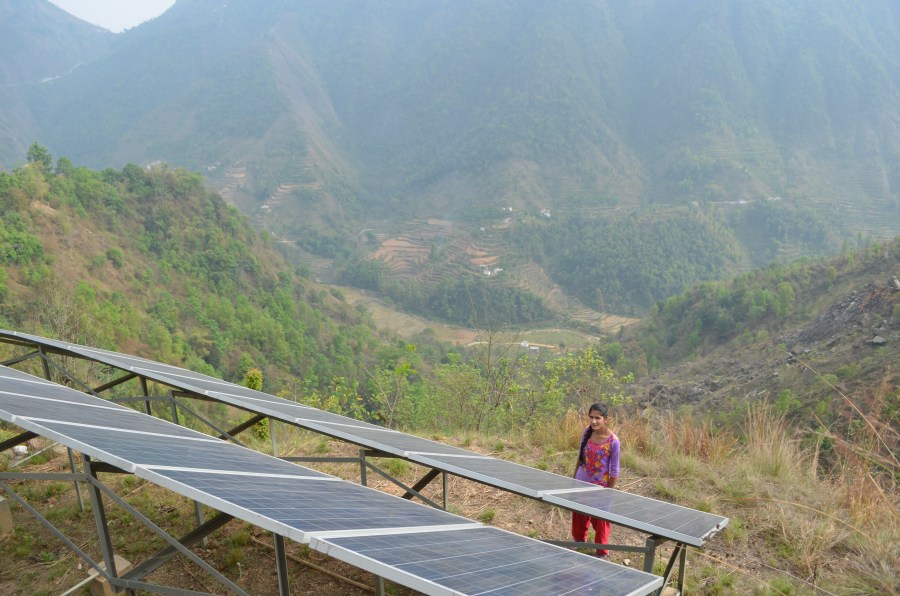
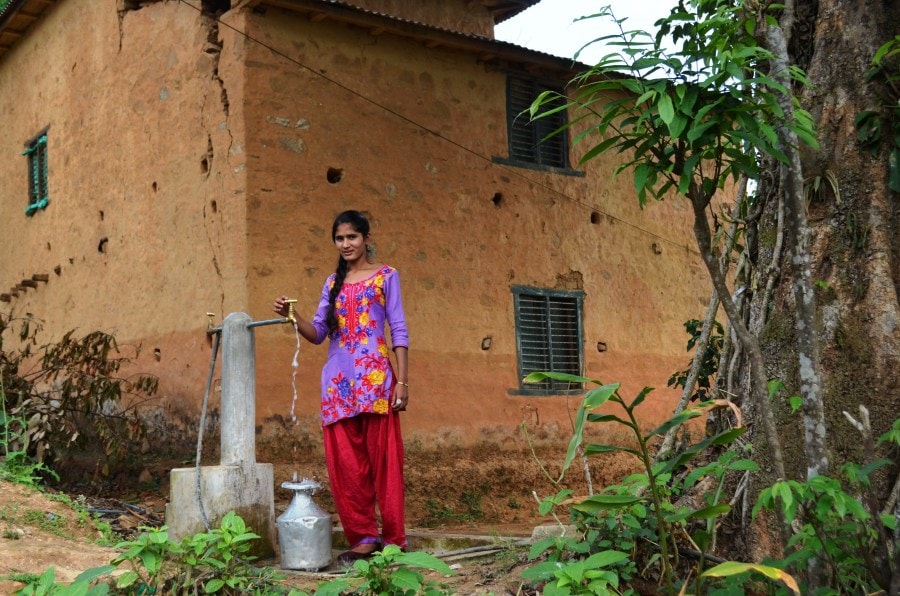
A little energy, a lot of change
Sushmita told us that her life has changed dramatically since the project finished. She is much happier and is no longer late for school. “I wake up at the same time as I did before (6am), but I am happy to wake up and know that I do not have to spend all morning fetching water. It now takes me a maximum of 15-minutes to fetch the water from a nearby tap.”
In the evenings, the impact of the project can be felt as well, “even after helping my mother with the housework, I get plenty of time to do my schoolwork and to study”, said Sushmita.
The installation of the solar panels and the water pump has made life easier for Sushmita and other women and girls like her, allowing for more time to be spent on activities other than fetching water, and improving the hygiene and sanitation of households – something that is expected to bring improved health.
As well as this, the increased access to water has also proven to stimulate greater vegetable growth, both in terms of quantity and quality.
“Since the pumps were installed, there is no empty land in the community, and all households are growing vegetables, fruits, and crops throughout the year. I remember the days when I had to carry water to grow vegetables. We grew very little in the dry season and didn’t eat them regularly. Now we have enough vegetables and we eat them every day.”
Further benefits are now being felt within the community, with the majority of households having purchased small biogas cooking facilities. Sushmita’s house is one of 30 within the village that has done this.
“Before the community had access to water, the majority of households used firewood for cooking. After we had access to water we got a biogas plant installed. It’s easier to cook in biogas, it saves time, and there is no pollution indoors.”
Sushmita saves more than three hours each day on water collection and her family’s income has increased due to improved vegetable growth and sales. Unfortunately, Sushmita was having to re-sit her school exams when we spoke to her, but she seemed determined to pass them this time around.
With the added time that the water pump has provided her with, and if she continues to show the same passion and desire, few would bet against her succeeding in her studies and achieving her target of working in the IT sector.
Whereas previously she would only dream of what could have been, now Sushmita has a chance to make these dreams a reality. A potential that promises so much, may yet be realised.
